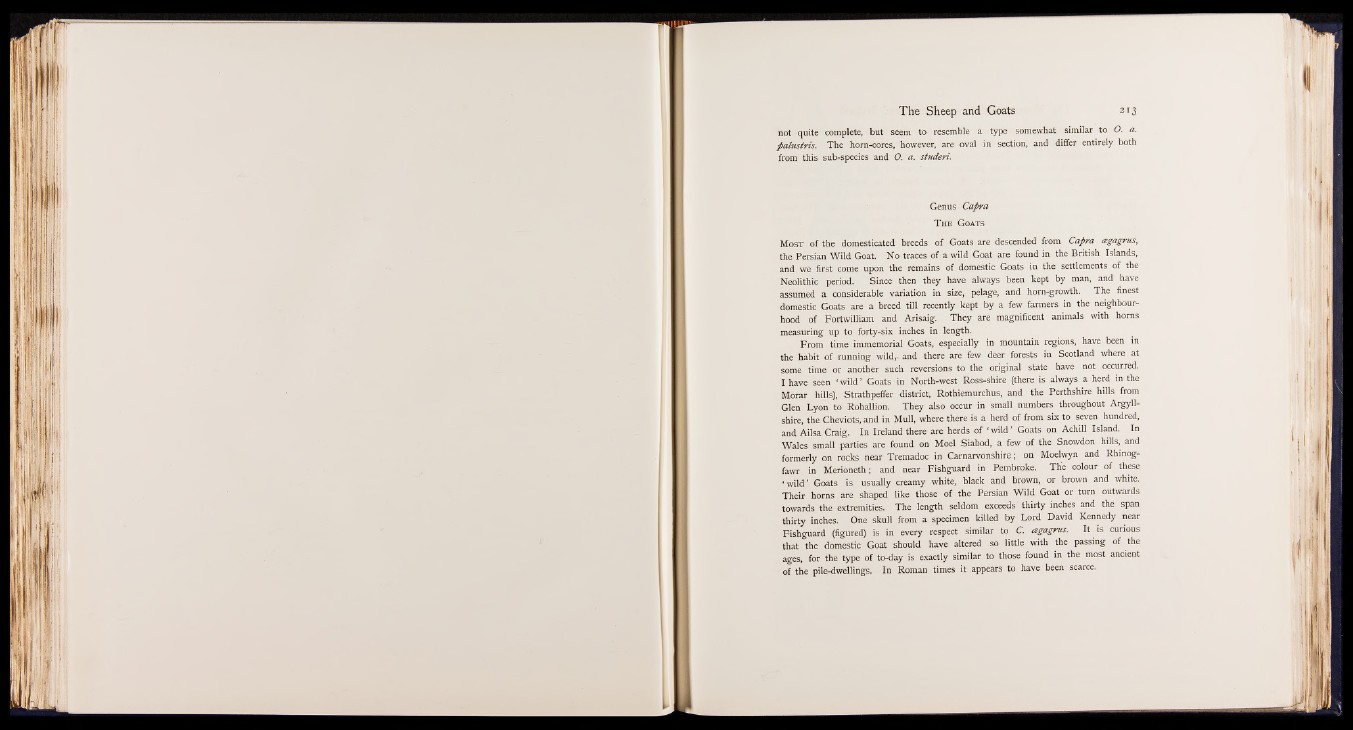
The Sheep and Goats 2 1 3
not quite complete, but seem to resemble a type somewhat similar to O. a.
Palustris. The horn-cores, however, are oval in section, and differ entirely both
from this sub-species and O. a. studeri.
Genus Capra
T he Goats
Most of the domesticated breeds of Goats are descended from Capra cegagrus,
the Persian Wild Goat. No traces of a wild Goat are found in the British Islands,
and we first come upon the remains of domestic Goats in the settlements of the
Neolithic period. Since then they have always been kept by man, and have
assumed a considerable variation in size, pelage, and horn-growth. The finest
domestic Goats are a breed till recently kept by a few farmers in the neighbourhood
of Fortwilliam and Arisaig. They are magnificent animals with horns
measuring up to forty-six inches in length.
From time immemorial Goats, especially in mountain regions, have been in
the habit of running wild,. and there are few deer forests in Scotland where at
some time or another such reversions to the original state have not occurred.
I have seen ‘ wild’ Goats in North-west Ross-shire (there is always a herd in the
Morar hills), Strathpeffer district, Rothiemurchus, and the Perthshire hills from
Glen Lyon to Rohallion. They also occur in small numbers throughout Argyllshire,
the Cheviots, and in Mull, where there is a herd of from six to seven hundred,
and Ailsa Craig. In Ireland there are herds of i wild ’ Goats on Achill Island. In
Wales small parties are found on Moel Siabod, a few of the Snowdon hills, and
formerly on rocks near Tremadoc in Carnarvonshire; on Moelwyn and Rhinog-
fawr in Merioneth; and near Fishguard in Pembroke. The colour of these
‘ wild ’ Goats is usually creamy white, black and brown, or brown and white.
Their horns are shaped like those of the Persian Wild Goat or turn outwards
towards the extremities. The length seldom exceeds thirty inches and the span
thirty inches. One skull from a specimen killed by Lord David Kennedy near
Fishguard (figured) is in every respect similar to C. agagrus. It is curious
that the domestic Goat should have altered so little with the passing of the
ages, for the type of to-day is exactly similar to those found in the most ancient
of the pile-dwellings. In Roman times it appears to have been scarce.